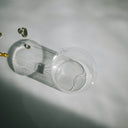Wearing caps is a common practice for style, sun protection, or simply to cover up a bad hair day. However, a persistent myth has circulated for years suggesting that caps might be secretly causing hair loss. This concern has left many people wondering whether their favorite baseball cap or beanie could be thinning their locks. In this article, we’ll dive deep into the science, debunk myths, and provide you with clear, evidence-based answers. Our goal is to address your questions thoroughly and help you make informed decisions about your hair health—without sacrificing your sense of style.
Table of content
Do Caps Cause Hair Loss?
No, caps do not cause hair loss. There’s no scientific evidence to support the idea that wearing a cap—whether tight or loose—directly leads to permanent hair loss. Hair loss is primarily influenced by genetics, hormones, medical conditions, and lifestyle factors, not by your choice of headwear. However, improper use of caps, like wearing them too tightly or infrequently washing them, could potentially contribute to temporary hair issues, such as breakage or scalp irritation, but these are not the same as true hair loss.
As your leading source for hair health information over the past 4 years, we never compromise on accuracy. When it comes to your health, you deserve information you can truly rely on - and earning your trust is our top priority.
Here's how Scandinavian Biolabs ensures every piece of content meets the highest standards of accuracy and integrity:
- Credentialed Experts: Our reviewers are actively practicing doctors and medical researchers
- Stringent Reviews: Content undergoes rigorous editing by subject specialists and review by a practicing doctor.
- Evidence-Based: We rely on well-established research from trusted scientific sources like peer-reviewed journals and health authorities.
- Full Transparency: Our editorial standards, writer credentials, reviewer credentials, correction process, and funding are all publicly documented.
- Independent Voice: While we do promote products, we operate in a vacuum to business operations. Our main goal is just an unwavering commitment to providing medically-sound guidance.
You can count on Scandinavian Biolabs to consistently deliver the trustworthy health information you deserve. Read our Editorial Standards.
The Origins of the Caps and Hair Loss Myth
Where did this idea even come from? The myth likely stems from observations of men who wear caps frequently—like baseball players or truck drivers—sometimes showing signs of balding. People may have connected the dots incorrectly, assuming the cap was to blame rather than genetics or age. Another theory is that caps, especially tight ones, might restrict blood flow to the scalp, starving hair follicles of nutrients. While this sounds plausible on the surface, the reality is far less dramatic. Blood flow to the scalp is robust and not easily disrupted by a hat, even one that’s snug.
Understanding Hair Loss: What Really Causes It?
To fully debunk the cap myth, it’s worth understanding what does cause hair loss. The most common type, androgenetic alopecia (male or female pattern baldness), is driven by genetics and the hormone dihydrotestosterone (DHT). DHT shrinks hair follicles over time, leading to thinner hair and eventual loss. Other culprits include:
- Stress: Physical or emotional stress can trigger temporary hair shedding (telogen effluvium).
- Medical Conditions: Issues like thyroid disease, alopecia areata, or scalp infections can lead to hair loss.
- Nutritional Deficiencies: Lack of iron, zinc, or protein can weaken hair.
- Harsh Hair Practices: Overuse of heat, chemicals, or tight hairstyles (traction alopecia) can damage hair.
Notice that “wearing a cap” doesn’t make the list. Caps might get a bad rap because they’re visible, but they’re not pulling the strings behind hair loss.
Can Caps Affect Hair Health in Other Ways?
While caps don’t cause permanent hair loss, they’re not entirely off the hook when it comes to hair health. Here’s how they might play a minor role:
Tight Caps and Traction Alopecia
If you wear an extremely tight cap consistently, it could tug on your hair roots over time. This prolonged tension might lead to traction alopecia, a type of hair loss caused by physical stress on the follicles. However, this is rare and requires excessive force—think more along the lines of tight ponytails or braids, not your average cap. Most caps aren’t tight enough to cause this issue, and adjusting the fit can eliminate any risk.
Scalp Hygiene and Dirty Caps
A sweaty, unwashed cap can trap dirt, oil, and bacteria against your scalp. This might lead to irritation, dandruff, or even minor infections if left unchecked. While these conditions can make your scalp uncomfortable and your hair appear less healthy, they don’t directly cause permanent hair loss. Washing your caps regularly and letting your scalp breathe can prevent these problems.
Hair Breakage
Rough fabrics or frequent friction from a cap might cause hair strands to break, especially if your hair is already brittle or damaged. Breakage can make hair look thinner, but it’s not the same as follicle-level hair loss. Using a cap with a smooth interior lining and caring for your hair with proper conditioning can mitigate this.
What Science Says About Caps and Hair Loss
No peer-reviewed studies have found a direct link between wearing caps and permanent hair loss. Dermatologists and trichologists (hair and scalp specialists) consistently agree that headwear doesn’t interfere with the hair growth cycle. Hair grows in three phases—anagen (growth), catagen (transition), and telogen (resting)—and caps don’t disrupt this process. A 2016 study on scalp health even noted that external factors like hats have negligible impact on follicular health compared to internal factors like genetics or inflammation.
One exception worth mentioning: If you’re already experiencing hair loss (say, from pattern baldness), a cap might make it more noticeable by flattening your hair or drawing attention to thinning spots. But that’s a cosmetic issue, not a cause.
How to Wear Caps Without Worrying About Your Hair
Love your caps? Here’s how to wear them confidently without risking your hair’s health:
- Choose the Right Fit: Opt for adjustable caps that sit comfortably without squeezing your scalp.
- Keep It Clean: Wash your caps regularly to avoid buildup of sweat and bacteria.
- Give Your Scalp a Break: Take your cap off occasionally to let your scalp air out, especially after sweating.
- Protect Your Hair: Use a leave-in conditioner or lightweight oil to reduce friction and breakage.
By following these tips, you can rock your favorite headwear without a second thought about your hairline.
Common Myths About Caps and Hair Loss Debunked
Let’s tackle a few more misconceptions floating around:
Myth: Caps Block Oxygen to the Scalp
Fact: Your scalp doesn’t rely on external air to nourish hair follicles—oxygen comes from your bloodstream. A cap might feel stuffy, but it’s not suffocating your roots.
Myth: Caps Cause Overheating and Hair Loss
Fact: While caps can trap heat, there’s no evidence that this damages follicles or triggers baldness. Scalp temperature variations from headwear are too minor to matter.
Myth: Bald People Wear Caps to Hide Hair Loss They Caused
Fact: People might wear caps to conceal thinning hair, but that doesn’t mean the cap caused it. Correlation isn’t causation!
When Should You Worry About Hair Loss?
If caps aren’t the culprit, how do you know when hair loss is a real concern? Look out for these signs:
- Excessive shedding (more than 100 strands a day).
- Visible thinning or bald patches.
- Itchy, red, or scaly scalp (could signal an underlying condition).
- Family history of baldness.
If you notice these, consult a dermatologist or healthcare provider. They can assess whether it’s genetics, a medical issue, or something else—and caps won’t be on their suspect list.
Conclusion: Caps Are Safe, So Wear Them Freely
So, do caps cause hair loss? The answer is a resounding no. Caps are a harmless accessory that won’t sabotage your hairline, no matter how often you wear them. True hair loss comes down to factors far beyond your headwear, like DNA and health. With proper care—keeping your caps clean and your scalp happy—you can enjoy the style and practicality of caps without worry. Next time someone warns you about your hat habits, you’ll have the facts to set them straight. Now, go ahead and tip your cap to healthy hair!
Tired of Thinning Hair? Try a Clinically Tested Serum.
Looking for a natural way to regrow hair and achieve a thicker, fuller head of hair? Ditch the stinging nettle for hair loss – Bio-Pilixin Serum is a drug-free hair activation serum that delivers clinically tested results.
Here's why Bio-Pilixin is superior:
- Clinically Tested Results: 93% of users saw a reduction in hair loss, and 73% experienced increased hair density.
- Safe and Natural: Unlike harsh chemicals, Bio-Pilixin uses plant growth factors derived from stem cell technology to nourish hair follicles and stimulate growth.
- Fast-Acting: See visible results in as little as 45 days (most typically see results within 150 days).
Stop wasting time on unproven remedies. Bio-Pilixin is the safe, natural serum you've been searching for.
Read more:






